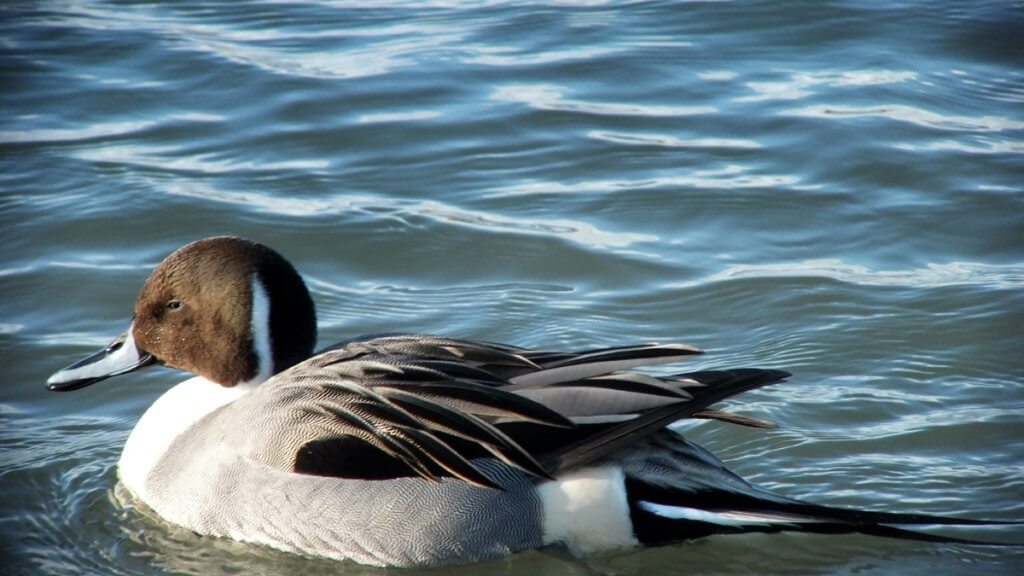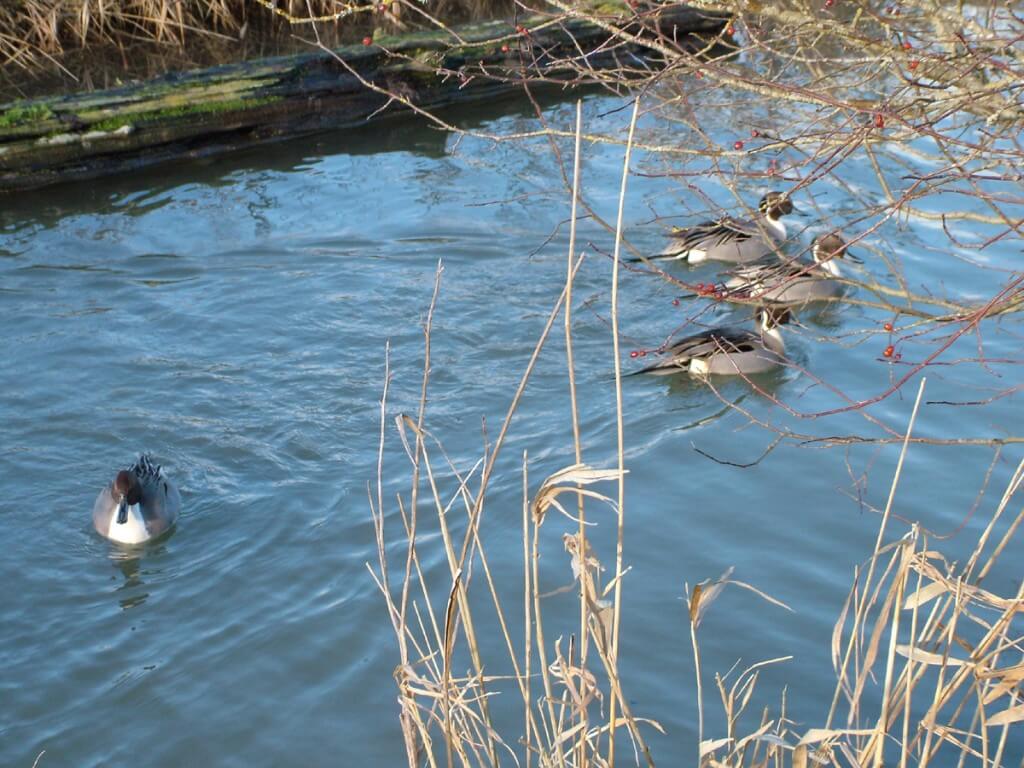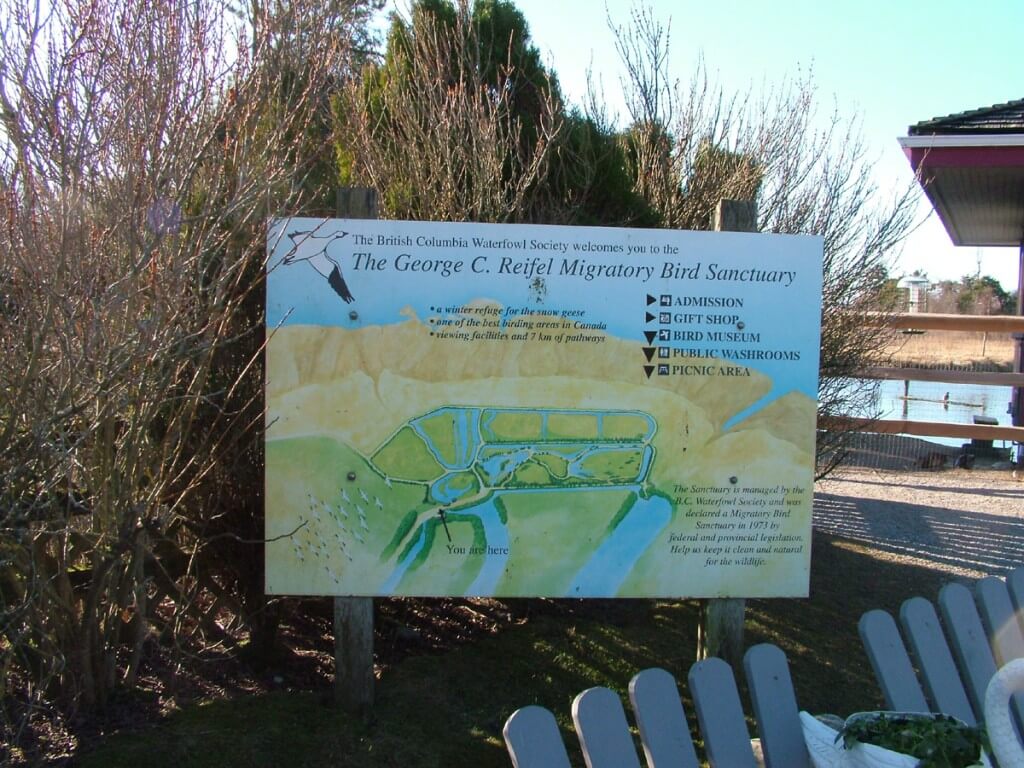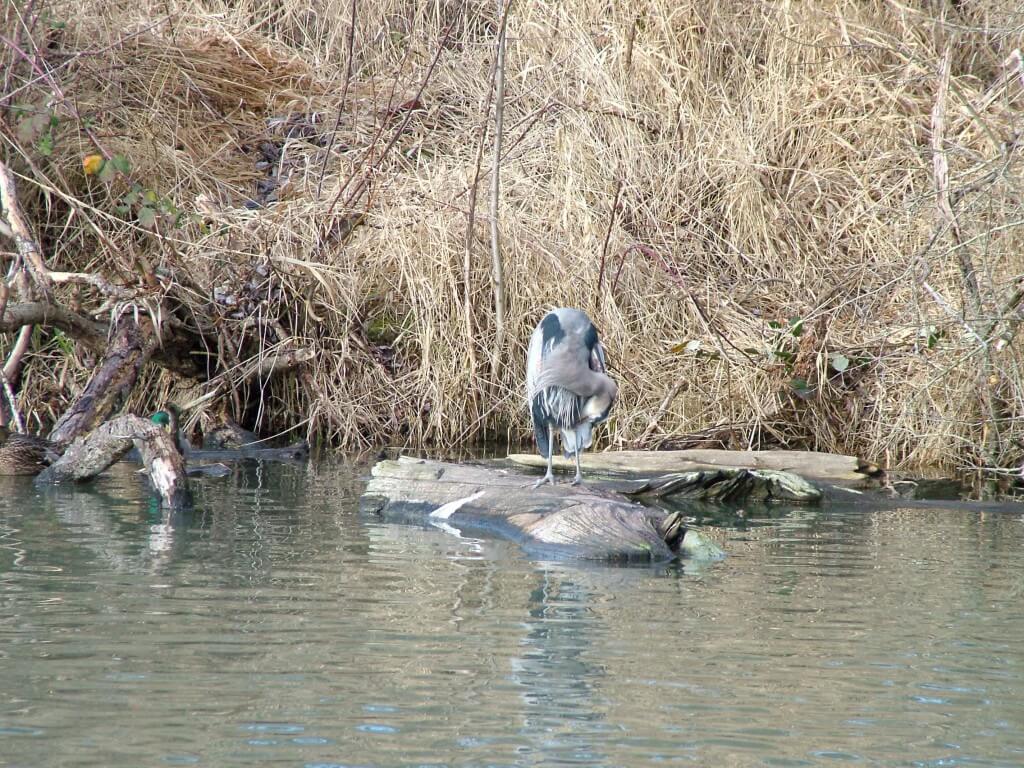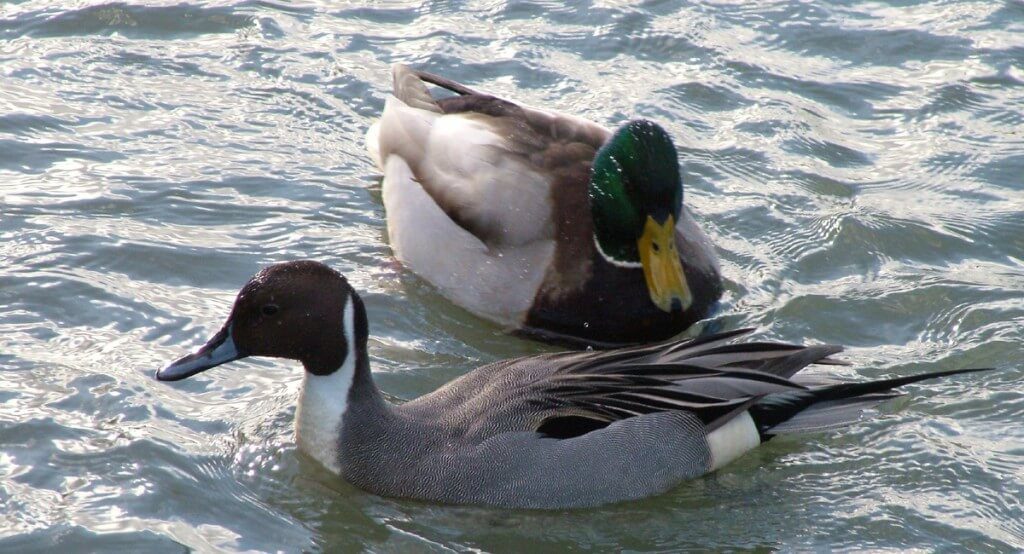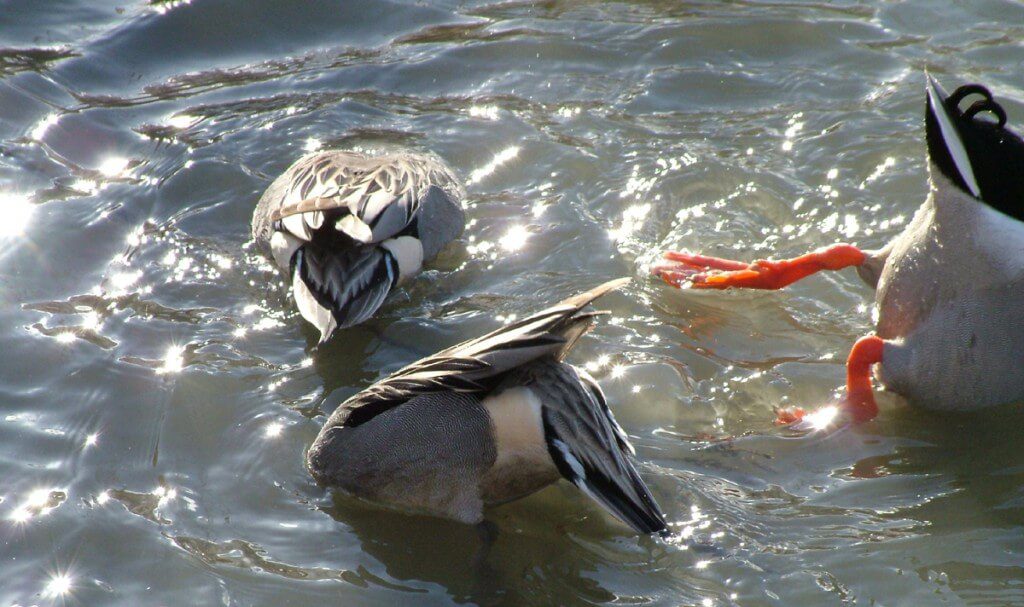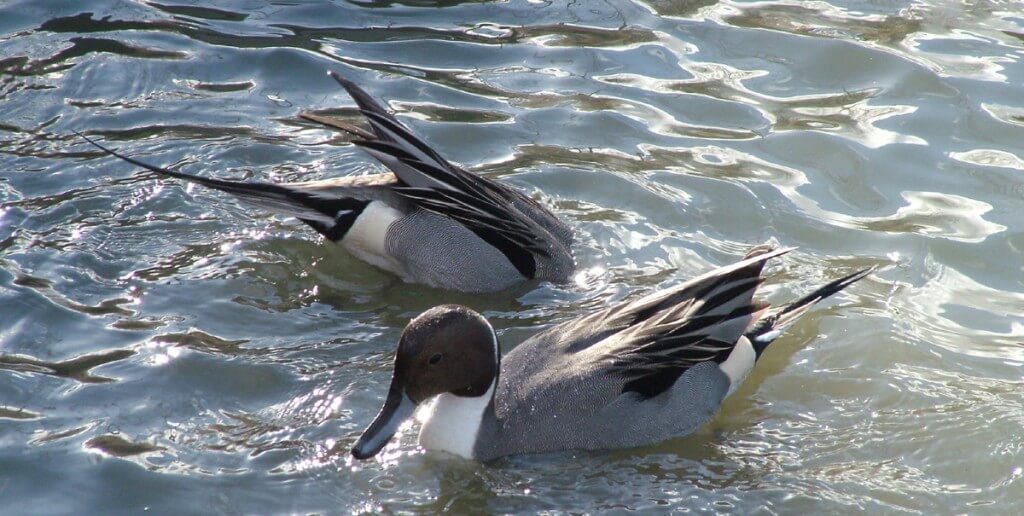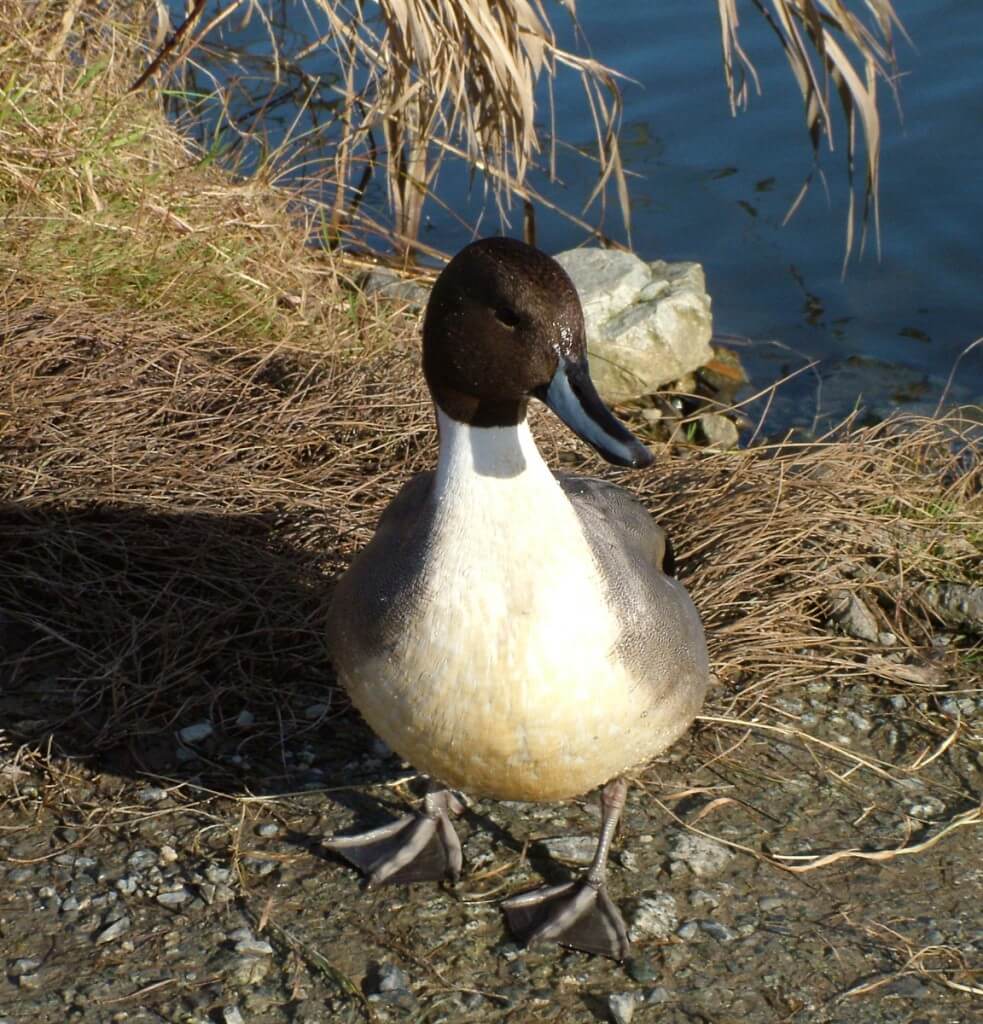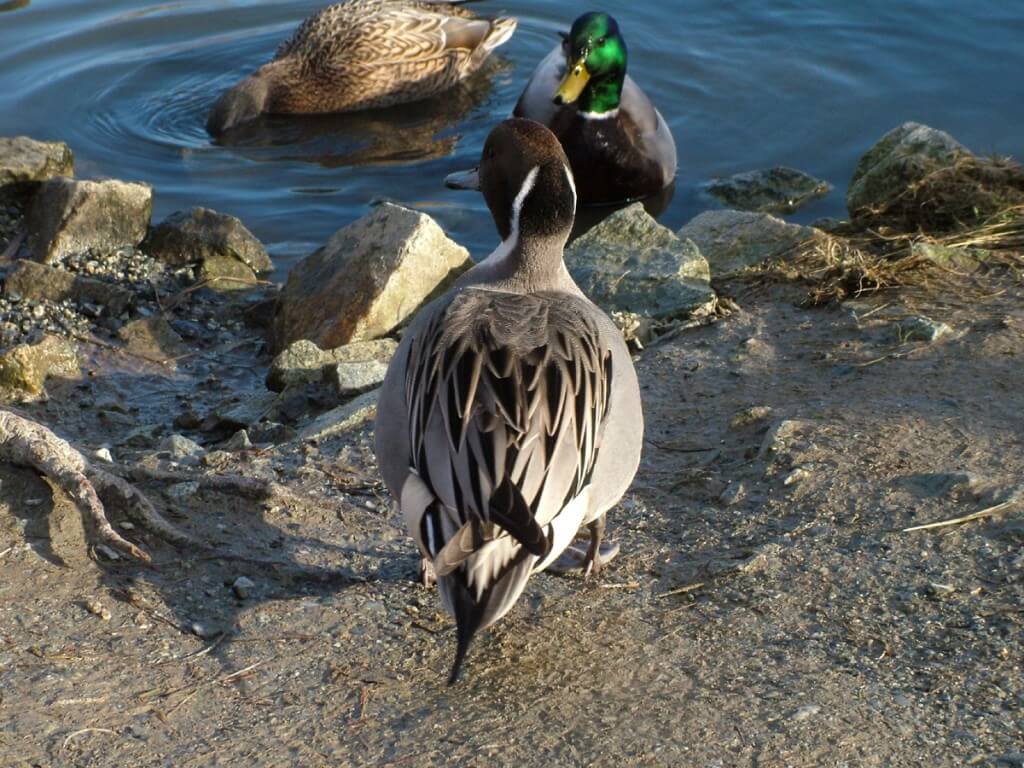Northern Pintail Ducks At Reifel Bird Sanctuary in British Columbia
Even before Bob and I pulled into the parking lot at George C. Reifel Migratory Bird Sanctuary, there was no doubt that we were in for some fantastic birdwatching. On the approach, paralleling the road, was a channel where Great Blue Herons and Common Mergansers were leisurely passing the afternoon. Our walkabout began along East Dyke, but we soon branched off onto a trail that meandered alongside a series of very large ponds. That is where we became enthralled with a flock of Northern Pintail Ducks.
Adjacent to the ponds was an extensive marshland, South West Marsh, that provided the most excellent habitat for these ducks that prefer bodies of fresh water and marshes, although outside of breeding season, they are quite at home in salt and brackish waters of the coast. Considering the bird sanctuary is only a stone’s throw away from the Salish Sea and Strait of Georgia, both on the Pacific Ocean, it made good sense that these ducks were wintering there.
The George C. Reifel Migratory Bird Sanctuary is located on the outskirts of the Village of Ladner, in Delta, British Columbia. In the early 1900’s, protective dykes were put in place to protect the farmland and fishing community from the Fraser River and tidal waters of the Strait of Georgia. Nearby islands in the river, such as Westham Island, were allowed to flood naturally each year. George C. Reifel acquired his property there in 1927. His land was isolated from the rest of Westham Island by a number of sloughs (swamps) with river channels that divided the island. George built a series of dykes and causeways in order to create waterfowl habitats and link his land to the remainder of Westham Island. Eventually, the Reifel family turned over control of their land to the federal government, since which time it has been managed to benefit waterfowl.
The Reifel Sanctuary, as well as all associated wetlands in the Fraser River estuary, play an important role in bird migration along the Pacific Coast of North America. Migrating birds that pass through the area come from 22 countries and 3 continents so the region has gained worldwide recognition as a significant habitat for breeding and wintering birds.
Despite the brilliant sunshine that afternoon, Bob and I were buffeted by a fierce wind sweeping in from the Pacific Ocean over the Marsh and West Field. The Pintail Ducks, sequestered low amongst the marsh grasses and reeds, were quite sheltered from the onslaught and went about their business totally undeterred.
Northern Pintail Ducks are the most widely distributed species of duck in the world. Their range includes Alaska south through the Great Plains and Great Lakes to the New England states, some reaching as far south as northern South America, and they also are found in parts of Europe, northern Africa and southern Asia. Pintails are very sociable in non-breeding season and will assemble into large flocks with other duck species, but they are not as numerous as Mallard Ducks. About half of North America’s Northern Pintail population, about six million, is found along the west coast.
On the sunny afternoon we visited the bird sanctuary, it seemed that the primary goal of all the ducks was looking for food. Northern Pintail Ducks dabble for plant food using their long necks to snatch aquatic plants and roots from the bottom of shallow bodies of water. They have an advantage over other dabblling ducks such as the Mallard because of its shorter neck. Northern Pintails will also filter feed at the water’s surface, and supplement their diet with snails, insects and water bugs during breeding season.
While feeding, a Pintail Duck submerges its head and only the upper half of its body. This process is called upending. When tipped up, a male Northern Pintail reveals the two long black tail feathers that come together to form a point. In this photo, you can catch a glimpse of one of the pintail’s blue legs, which is in stark contrast to the orange legs and webbed feet of the Mallard Duck seen above.
The pointed tail of the Northern Pintail Duck is where the species gets its name. The tail feathers are extremely long in the drakes, whereas the Northern Pintail hen has pin tail feathers that are about one-quarter the length of those of the male.
One of the distinguishing characteristics of a male Northern Pintail Duck is the white line extending up to the ear region on either side of its chocolate brown head and neck. The bill is quite noticeably bluish grey with a black central ridge.
Northern Pintail Ducks are slim with graceful long necks giving them a distinctive silhouette.
Like their bills, the legs and feet of the Northern Pintail Duck are bluish grey with dusky coloured webs. Despite the harsh, cold, windy conditions the afternoon of our visit, the ducks did not hesitate to come out of the water for a little stroll. Whilst taking a break on solid ground, they continued to feed by picking food from the surface of the trail and in amongst the grasses.
When on dry land, Northern Pintail Ducks walk or run with a slight waddle yet they are quite agile. It is, however, when they take to the air that they are most graceful and acrobatic. Because of their long slender bodies, they are capable of achieving great speeds when airborne. This has earned them the nickname ” greyhound of the air”.
A female Northern Pintail Duck is much less showy than the male. At first, I thought this duck in the foreground was a Pintail hen, but the fact that I can see orange legs or webs below its body confirmed it to be a female Mallard. A female Pintail does have similarly detailed markings on its sides and back, like this Mallard, but she would have an elongated tail, blue bill and legs.
The reason Bob and I found the Northern Pintail Ducks to be so magnificent were the intricacies of the male’s plumage. Draped neatly from the shoulder area across the back were stunning long, pointed feathers with contrasting whitish margins. Each feather was so perfectly placed as though precisely positioned for best advantage. Indeed, the drakes were in full breeding plumage as this species of duck is one of the first of the season to nest in North America, breeding right after the ice goes out in many northern areas anytime between April to June.
The upperparts and sides of a drake appear grey, but when looking closely, Bob and I could see fine vermiculations of a blackish hue over a white background, which together produced the grey effect. The drakes were indeed very handsome ducks.
Frame To Frame – Bob and Jean

